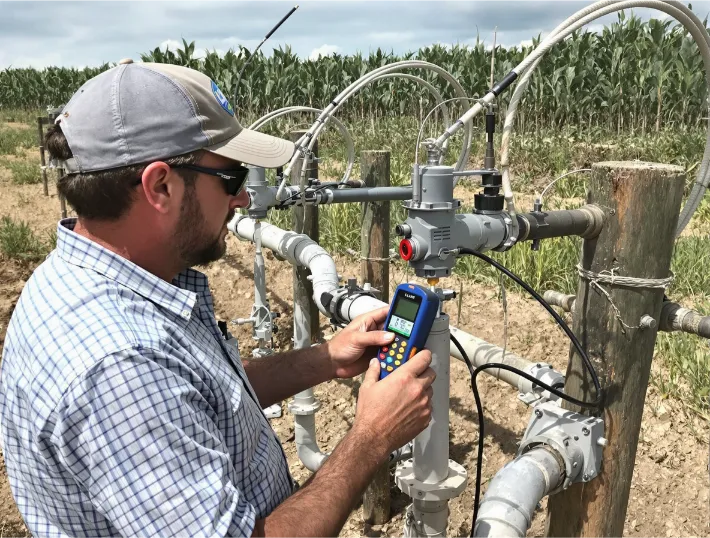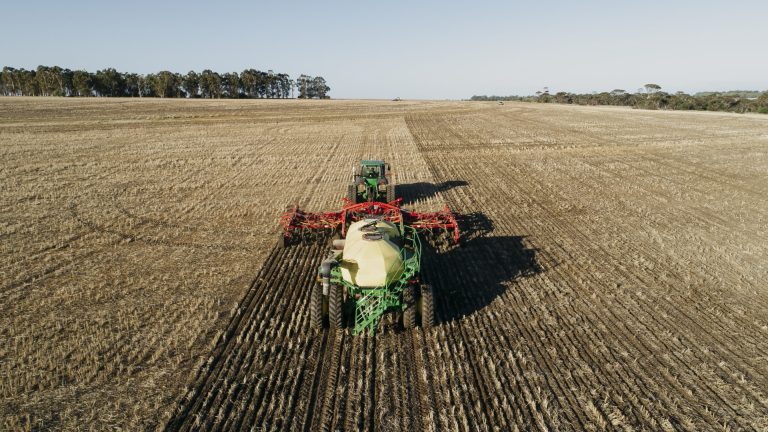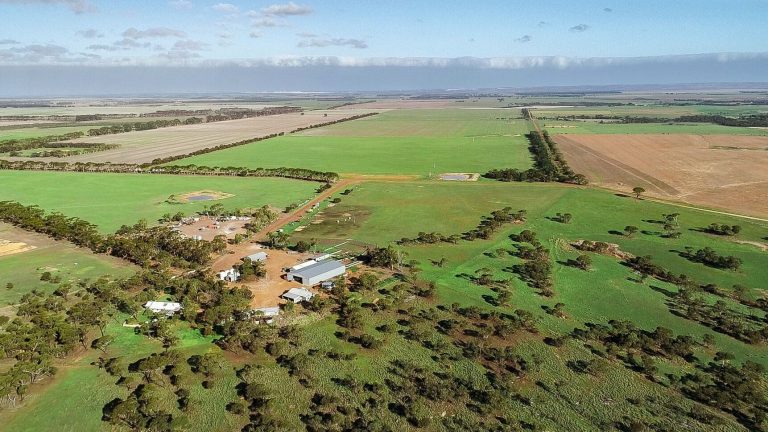Calculating Returns on Investment in Crop Farming Properties in Queensland
When considering agricultural property investments, calculating returns on investment in crop farming properties in Queensland represents one of the most complex yet rewarding financial evaluations in Australian agribusiness. Queensland’s diverse agricultural landscape offers tremendous opportunities for investors seeking robust returns through crop production, but success depends heavily on understanding the intricate financial modeling required to assess these investments accurately.
At Agribusiness Horizons, we specialise in providing comprehensive financial analysis and valuation services that help investors make informed decisions about crop farming properties across Queensland. Our expertise in agricultural economics, property market analytics, and investment forecasting ensures that clients understand both the potential rewards and inherent risks associated with crop property investments. Whether you’re a first-time agricultural investor or expanding an existing portfolio, our team can guide you through the complex process of evaluating agricultural property returns.
This comprehensive guide will walk you through the essential components of investment return calculations, market factors specific to Queensland’s agricultural sector, and practical strategies for maximising your crop farming property investments. We’ll examine the various methodologies used by professionals, key considerations unique to Queensland’s climate and soil conditions, and how to structure your analysis for long-term success.
Understanding Queensland’s Agricultural Investment Climate
Queensland’s agricultural sector has experienced remarkable transformation over recent decades, with crop farming properties becoming increasingly attractive to both domestic and international investors. The state’s diverse climate zones, from tropical north to temperate south, create unique opportunities for year-round production across multiple crop types. This geographic diversity means that investment return calculations must account for regional variations in productivity, weather patterns, and market access.
The state’s agricultural infrastructure has undergone significant modernisation, with improved transportation networks, storage facilities, and processing capabilities enhancing the value proposition for crop farming properties. Government initiatives supporting agricultural innovation and sustainability have created additional value streams through carbon credits, biodiversity programs, and water efficiency incentives that smart investors incorporate into their return calculations.
Modern crop farming properties in Queensland benefit from technological advances in precision agriculture, automated irrigation systems, and data-driven crop management practices. These innovations have fundamentally changed how we approach investment return calculations, as properties with advanced technology infrastructure often command premium valuations and deliver superior long-term performance compared to traditional operations.
Key Components of Agricultural Investment Return Analysis
Financial Modeling Fundamentals
ROI analysis for agricultural land in Queensland requires a sophisticated understanding of agricultural cash flow patterns, which differ significantly from traditional real estate investments. Seasonal revenue cycles, variable input costs, and commodity price fluctuations create complex financial models that must account for multiple scenarios and risk factors.
The foundation of any robust analysis begins with comprehensive income projections based on historical yield data, current market prices, and realistic productivity assumptions. Professional investors examine multiple years of operational data to understand typical revenue patterns, accounting for both exceptional seasons and challenging periods that inevitably occur in agricultural production.
Key components of comprehensive cost analysis include:
- Operational expenses such as seed, fertiliser, and chemical inputs
- Labour costs including seasonal workforce requirements and skilled farm management
- Infrastructure maintenance covering irrigation systems, machinery, and storage facilities
- Regulatory compliance costs and insurance requirements specific to agricultural operations
Queensland’s unique agricultural environment requires specific considerations for pest management, irrigation infrastructure, and seasonal labour availability that directly impact operational expenses and overall profitability.
Property-Specific Valuation Factors
Agricultural property investment analysis extends beyond simple income calculations to include comprehensive asset valuation. Soil quality assessment, water access rights, and infrastructure condition all contribute to long-term value appreciation potential. Queensland’s diverse soil types, from the rich black soils of the Darling Downs to the red volcanic soils of the Atherton Tablelands, each present different productivity potentials and investment characteristics.
Water rights and irrigation infrastructure represent increasingly valuable components of crop farming properties, particularly as climate variability continues to impact traditional rainfall patterns. Properties with secure water allocations and modern irrigation systems command premium valuations and offer more predictable returns compared to dryland operations dependent solely on natural precipitation.
The location factor plays a crucial role in Queensland crop property valuations, with proximity to processing facilities, transportation networks, and major population centres affecting both operational costs and market access. Properties positioned near key infrastructure typically demonstrate stronger capital appreciation and more stable rental yields when leased to tenant farmers.
Queensland-Specific Market Considerations
Climate and Seasonal Factors
Queensland’s agricultural calendar creates unique investment considerations that differ substantially from other states. The state’s tropical and subtropical climate zones present both opportunities and challenges for crop production, with seasonal weather patterns directly impacting revenue timing and intensity. When calculating returns on investment in crop farming properties in Queensland, investors must account for the potential volatility associated with cyclone seasons, drought periods, and extreme weather events that can significantly affect annual yields.
The diversity of crops suitable for Queensland conditions means that sophisticated investors often examine properties capable of supporting multiple crop rotations or alternative production systems. This flexibility provides risk mitigation opportunities and potential for enhanced returns through optimal crop selection based on prevailing market conditions and seasonal outlook.
Regional microclimates within Queensland create distinct investment profiles, with properties in established agricultural districts often commanding premium prices due to proven productivity and established infrastructure. Understanding these regional nuances becomes essential when comparing investment opportunities across different areas of the state.
Market Access and Infrastructure
Queensland’s extensive coastline and established export infrastructure provide unique advantages for crop farming properties focused on international markets. Properties with direct access to port facilities or efficient transportation networks often demonstrate superior return profiles due to reduced logistics costs and enhanced market access flexibility.
The state’s growing domestic market, driven by population growth in Brisbane and regional centres, creates additional opportunities for properties positioned to service local demand. Fresh produce operations, in particular, benefit from proximity to major population centres, with reduced transportation costs and shorter supply chains contributing to improved profitability margins.
Rural infrastructure development continues to enhance the investment appeal of Queensland crop farming properties, with improved telecommunications, power supply reliability, and road networks reducing operational costs and improving property accessibility. These infrastructure improvements often translate directly into enhanced property values and improved investment returns over time.
Professional Valuation Methodologies for Queensland Agricultural Investment Return Evaluation
| Methodology | Application | Key Strengths | Primary Focus |
|---|---|---|---|
| Comparable Sales Analysis | Property valuation | Market-based pricing | Recent transaction data |
| Income Capitalisation | Cash flow assessment | Revenue-focused analysis | Operational profitability |
| Discounted Cash Flow | Long-term projections | Future value consideration | Multi-year scenarios |
| Cost Replacement Method | Infrastructure valuation | Asset-based assessment | Physical improvements |
| Residual Land Value | Development potential | Highest use analysis | Alternative applications |
When calculating returns on investment in crop farming properties in Queensland, professional valuers combine multiple methodologies to provide comprehensive assessments that reflect both current market conditions and future potential. This multi-faceted approach ensures that investors receive accurate agricultural property valuations that account for all significant value drivers and risk factors.
How Agribusiness Horizons Enhances Your Investment Analysis
Our specialised approach to investment return calculations for Queensland crop properties combines decades of agricultural experience with cutting-edge financial modeling techniques. We provide comprehensive valuation services that incorporate comparable transaction analysis, discounted cash flow modeling, and sensitivity testing against variables like rainfall patterns and commodity price fluctuations to deliver robust investment assessments.
Our team’s deep understanding of Queensland’s agricultural markets enables us to identify value-enhancing opportunities that general commercial brokers often overlook. From water rights optimisation to carbon offset potential, we help clients quantify the full spectrum of value drivers associated with modern crop farming properties. Our in-house sustainability analyst provides ESG value assessments that increasingly influence institutional investment decisions and long-term property values.
We leverage our extensive network of agricultural professionals, including agronomists, soil scientists, and irrigation specialists, to provide clients with comprehensive due diligence support. This collaborative approach ensures that investment return calculations reflect realistic operational scenarios and account for property-specific factors that could significantly impact long-term performance.
Our proprietary market timing analysis helps clients identify optimal acquisition and disposal opportunities, using advanced modeling to forecast pricing cycles and market conditions. This strategic guidance enables investors to maximise returns through informed timing decisions and effective pre-sale positioning strategies that capitalise on market trends.
Strategic Approaches for Maximising Returns
Successful crop farming property investment in Queensland requires a strategic approach that balances immediate cash flow requirements with long-term capital appreciation potential. When conducting financial returns assessment for Queensland farming operations, experienced investors focus on properties with multiple value creation opportunities, such as infrastructure improvement potential, water resource development, or alternative crop diversification possibilities.
Essential risk mitigation strategies include:
- Geographic diversification across Queensland’s different climate zones and soil types
- Crop rotation planning that optimises soil health and market timing opportunities
- Water security through both allocation rights and efficient irrigation infrastructure
- Technology integration for precision agriculture and yield optimisation systems
Modern investors increasingly incorporate sustainability considerations into their crop property investment analysis in Queensland, recognising that environmentally responsible farming practices often translate into enhanced long-term profitability. Properties with established conservation programs, renewable energy systems, or carbon sequestration potential frequently demonstrate superior return profiles compared to conventional operations.
Technology integration represents another significant opportunity for return enhancement, with precision agriculture systems, automated irrigation, and data management platforms improving operational efficiency and yield optimisation. Properties equipped with modern agricultural technology typically command premium lease rates and demonstrate stronger capital appreciation over time.
The strategic timing of improvements and upgrades can significantly impact investment returns, with well-planned infrastructure development enhancing both operational efficiency and property valuation. When properly executing the process of calculating returns on investment in crop farming properties in Queensland, our experience suggests that investors who approach property enhancement systematically, based on comprehensive feasibility analysis, typically achieve superior returns compared to those making ad-hoc improvements.
Future Outlook and Investment Opportunities
Queensland’s agricultural sector continues to evolve, with emerging trends creating new opportunities for astute investors willing to adapt their investment return calculations for Queensland crop properties to changing market conditions. Climate-adapted crop varieties, precision agriculture technologies, and sustainable farming practices are reshaping the investment landscape and creating potential for enhanced returns.
The growing focus on food security and sustainable production systems is driving increased investment interest in agricultural properties, particularly those demonstrating strong environmental stewardship and operational efficiency. Properties positioned to benefit from these trends often attract premium valuations from both domestic and international investors seeking exposure to agricultural property portfolios.
Key emerging opportunities include:
- Carbon farming initiatives and biodiversity conservation programs generating additional revenue streams
- Precision agriculture technologies improving operational cost analysis and yield optimisation
- Water rights valuation appreciation due to increasing scarcity and regulatory changes
- Agribusiness financial modeling integration with environmental and social governance factors
The integration of renewable energy systems, carbon farming opportunities, and biodiversity conservation programs creates additional revenue streams that enhance overall investment returns. Properties capable of generating income from multiple sources typically demonstrate more stable cash flows and reduced dependence on traditional commodity markets, making them attractive additions to any agricultural property portfolio.
Conclusion
Successfully calculating returns on investment in crop farming properties in Queensland requires sophisticated analysis that accounts for the complex interplay of agricultural, environmental, and market factors unique to the state. From understanding seasonal revenue patterns to evaluating long-term infrastructure needs, investors must consider multiple variables that influence both immediate cash flow and future capital appreciation.
The opportunities presented by Queensland’s diverse agricultural landscape are substantial, but realising optimal returns requires expert guidance and comprehensive analysis. Professional valuation services, market intelligence, and strategic planning become essential tools for navigating the complexities of agricultural property investment successfully.
As you consider your agricultural investment strategy, ask yourself: How well do you understand the specific factors that drive returns in your target agricultural region? What role will climate resilience and sustainability play in your long-term investment performance? How can you position your portfolio to benefit from emerging trends in agricultural technology and environmental stewardship?
For expert guidance on calculating returns on investment in crop farming properties in Queensland, contact Agribusiness Horizons today. Our team of agricultural investment specialists can provide the comprehensive analysis and strategic insights needed to maximise your agricultural property investment success. Reach out to Rawdon Briggs at +61 428 651 144 or visit our website to schedule a consultation and learn how our expertise can enhance your investment outcomes.



